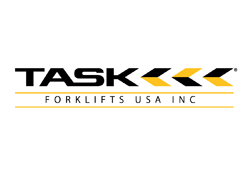What are the Benefits of Using a Metal Cutting Saw
In the realm of metalworking and fabrication, the importance of utilizing the right tools cannot be overstated, particularly when it comes to precision and efficiency. A recent industry report by Grand View Research indicates that the global metal cutting market is projected to reach $262.24 billion by 2027, highlighting the growing demand for effective metal processing solutions. Among the array of tools available, the Metal Cutting Saw stands out for its ability to deliver clean and accurate cuts in various types of metals, reducing waste and increasing productivity. This blog post explores the numerous benefits of using a Metal Cutting Saw, including enhanced speed, improved safety, and better overall quality of work, providing both professionals and hobbyists with insight into why this tool is essential in modern metalworking practices.
Understanding the Advantages of Metal Cutting Saws in Various Applications
Metal cutting saws have become indispensable tools across various industries due to their remarkable efficiency and versatility. These saws excel in applications ranging from manufacturing to construction, providing a streamlined approach to cutting metals with high precision. The ability to effortlessly handle a variety of metal types, including aluminum, steel, and even exotic alloys, makes metal cutting saws suitable for both small-scale workshop jobs and large industrial projects.
One of the key advantages of metal cutting saws is their superior cutting speed and clean finish. This efficiency not only enhances productivity but also reduces material wastage, ultimately lowering operational costs. Additionally, advancements in technology have led to the development of more sophisticated saws that incorporate features such as enhanced blade materials, which improve durability and performance. As industries increasingly focus on optimizing manufacturing processes, the demand for metal cutting saws is expected to grow significantly, underscoring their vital role in modern production and construction environments.
Key Features to Look for When Choosing a Metal Cutting Saw
When selecting a metal cutting saw, there are several key features to consider ensuring you choose the right tool for your needs. First and foremost, the type of blade is crucial. Different metals require different types of blades; for instance, carbide-tipped blades are ideal for cutting hard metals, while bi-metal blades can handle a variety of materials. Always check the compatibility of the blade with the saw and the materials you intend to work with.
Another important feature is the power of the motor. A more powerful motor will typically allow for faster and smoother cuts, especially in thicker materials. Look for saws with a higher amperage rating, as they are generally more efficient and capable of handling tough jobs without overheating. Additionally, consider the saw's cutting capacity; this refers to the maximum width and height of the material it can cut. Ensure the saw you choose meets your project requirements.
Tips: Always wear appropriate safety gear when operating any cutting tool. Regular maintenance of your metal cutting saw, such as checking the blade for wear and ensuring that all parts are functioning correctly, can improve longevity and performance. Finally, read user reviews to understand the real-world performance of the saw you’re considering, as they often highlight features that specifications might overlook.
How to Enhance Precision and Efficiency with Metal Cutting Saws
Metal cutting saws have become indispensable tools in modern fabrication and manufacturing environments. To enhance precision and efficiency with these saws, understanding their capabilities and the emerging technologies in the market is crucial. The global plasma cutting machine market, for example, is poised for significant growth, projected to increase from $699.5 million in 2025 to $905.2 million by 2032, with a compound annual growth rate (CAGR) of approximately 5.5%. This upward trend underscores the demand for advanced cutting solutions that can deliver both accuracy and speed.
When selecting a metal cutting saw, factors such as blade material, design, and type of cut become paramount. High-quality blades made from durable materials ensure longer life and cleaner cuts, minimizing the need for rework. Innovations in saw technology, including automated feed systems and integrated laser guides, are enhancing efficiency by allowing operators to achieve precise cuts even in high-volume production settings. By investing in the right metal cutting saws and accessories, businesses can optimize their operations, leading to reduced waste and improved overall productivity.
Essential Safety Tips for Using Metal Cutting Saws Effectively
When using metal cutting saws, safety should always be a top priority to prevent accidents and injuries in the workplace. According to industry reports, proper safety practices can reduce the risk of injury by up to 50%. This underscores the importance of wearing appropriate personal protective equipment (PPE), such as safety goggles, gloves, and ear protection. Furthermore, ensuring that the work area is clear of obstructions can help in maintaining focus and avoiding accidents during the cutting process.
In addition to personal safety measures, understanding the equipment is crucial for effective use. Regular maintenance and inspection of the saws not only ensure optimum performance but also extend the life of the cutting tools. A report indicated that properly maintained cutting saws can achieve up to 30% higher efficiency in metal cutting applications. Furthermore, ensuring the correct blade type for the specific metal being cut can minimize wear and enhance precision, providing superior results while ensuring safety. By adhering to essential safety tips and maintenance practices, users can maximize productivity and safety simultaneously.
What are the Benefits of Using a Metal Cutting Saw - Essential Safety Tips for Using Metal Cutting Saws Effectively
| Benefit/Safety Tip | Description |
|---|---|
| Precision Cutting | Allows for accurate cuts, leading to better-fitting materials and reduced waste. |
| Time Efficiency | Speeds up the cutting process compared to manual tools, saving time on projects. |
| Versatility | Can cut a variety of metals and materials, making it suitable for diverse applications. |
| Safety Features | Modern metal cutting saws often come with safety guards and automatic shut-offs. |
| Reduced Operator Fatigue | Electric saws reduce manual effort, lowering the risk of strain injuries. |
| Proper Protective Equipment | Always wear safety goggles and gloves to protect against flying debris. |
| Clear Work Area | Ensure the cutting area is free of clutter to prevent accidents. |
| Check Equipment Before Use | Inspect the saw for damage or wear to ensure safe operation. |
| Maintain a Firm Grip | Always hold the saw securely to maintain control during the cut. |
Maintenance Practices to Extend the Lifespan of Your Metal Cutting Saw
Maintaining a metal cutting saw is crucial for ensuring its longevity and optimal performance. Regular upkeep not only enhances the efficiency of the tool but also prevents costly repairs and replacements over time. One key practice is to keep the saw blade clean and free of debris. Residue from cutting operations can lead to overheating and dullness, so using a suitable cleaning solution or brush after each use can markedly extend the blade's life.
Another essential maintenance practice involves proper lubrication of the moving parts. Frequent lubrication reduces friction, helps in smooth operation, and minimizes wear and tear. It's advisable to consult the manufacturer’s guidelines on specific lubricants to use, ensuring that the saw runs smoothly and efficiently. Additionally, storing the saw in a dry, secure area protects it from environmental factors and potential damage, ensuring it remains in top condition for future projects. By incorporating these simple yet effective maintenance practices, users can maximize the lifespan of their metal cutting saw and achieve consistent, high-quality cuts.
Benefits of Using a Metal Cutting Saw
This chart illustrates the various benefits of using a metal cutting saw, measured on a scale from 1 to 10. Increased efficiency and durability are highly rated, showcasing the advantages of adopting this tool in metalworking applications.











